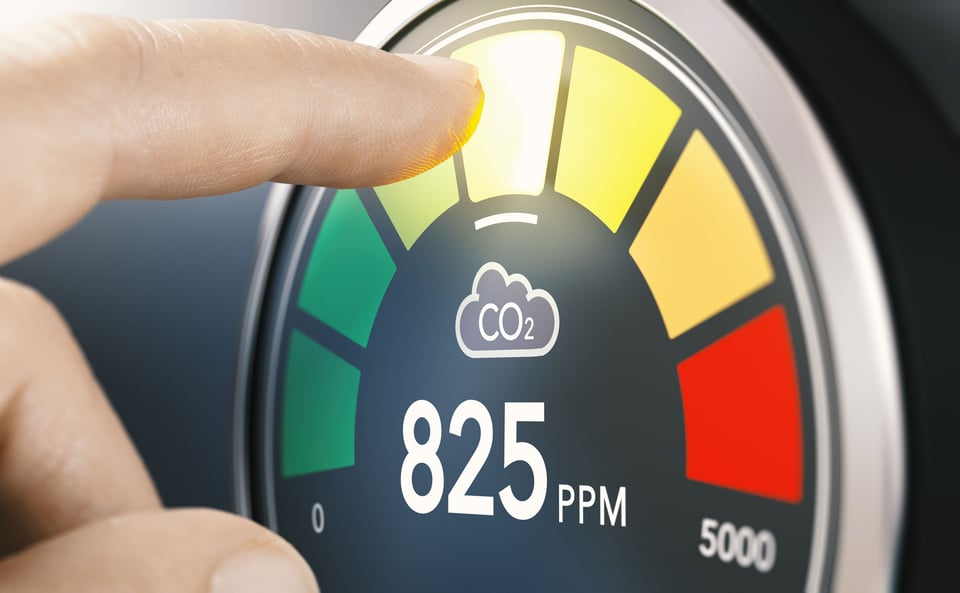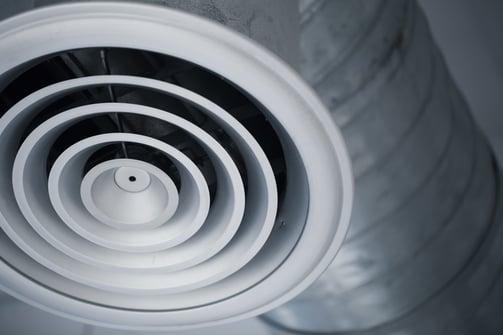Why measure the amount of CO2 in the air?

But what do they really measure and what are they used for?
It is worth noting that carbon dioxide does not carry viruses in the air and is therefore not a means of contamination. In fact, the viruses present in the air are found in aerosols and ultra-fine droplets.
CO2 is not an indicator of good or poor air quality or of risks of contamination or not. This gas is not harmful except at high doses and does not allow the presence of allergens, viruses, and many other nuisances present in the air to be measured.
So why measure the level of CO2 in the air?
 CO2 is an indicator of the number of people, confinement, and therefore of the comfort one has in a room, just like humidity. A measurement of this indicator simply serves to verify that the room's ventilation is sufficient in relation to the number of people in an indoor space. It is an excellent indicator of ventilation.
CO2 is an indicator of the number of people, confinement, and therefore of the comfort one has in a room, just like humidity. A measurement of this indicator simply serves to verify that the room's ventilation is sufficient in relation to the number of people in an indoor space. It is an excellent indicator of ventilation.Over-ventilating an environment will help control your CO2 and humidity levels, and therefore the comfort of your room. However, this does not allow a CO2 sensor to provide a risk of contamination or the introduction of allergens by outside air and other pollutants within a room. Indeed, if this were the case, it would be a past indication, so the information delivered would be too late or simply incorrect.
In 2012, ANSES warned that CO2 should not be used as an index of air quality but as an index of comfort (Referral 2012-SA-0093) and recommended that CO2 be an indicator of confinement.
 To illustrate these explanations, let us take the example of a meeting in a 30 m2 room with 8 healthy people and an air renewal of 300 m3/h. The level of 800 ppm of CO2 will be quickly exceeded after 20 minutes. The CO2 sensor will sound the alarm of contamination. This is a false alarm.
To illustrate these explanations, let us take the example of a meeting in a 30 m2 room with 8 healthy people and an air renewal of 300 m3/h. The level of 800 ppm of CO2 will be quickly exceeded after 20 minutes. The CO2 sensor will sound the alarm of contamination. This is a false alarm.Let us take the same ventilation and the same room with 2 people, one of whom is sick. The sensor will not sound any alarm, yet the risk of contamination is real because the healthy person is in the presence of the contamination source.
Some manufacturers of more advanced sensors have realized this inconsistency and have started developing virtual sensors integrating several parameters (CO2, humidity, number of aerosols, etc.).
So what should you do when the CO2 level is too high in an indoor space?
Indeed, given the required air renewal rate, you would need to open the windows every 15 minutes or over-boost existing ventilation systems, resulting in sub-problems such as high heat losses in the ambient air in winter, for example. Needless to say, this will quickly be felt economically, ecologically, and socially, which is absolutely not desirable for an establishment, whether public or private.

To effectively address issues related to exposure to local and external sources of pollution, local air purification is needed, using an air purifier operating at a sufficient mixing rate to reduce direct exposure. This is a real complement to ventilation systems coupled with CO2 sensors.
It is evident that today, a sensor is not only used to educate people about air quality. If it is reduced to this task alone, people will become tired of the information, and it will lose its value. Therefore, it is necessary to create a relevant interaction with the measuring tool and enable the user not only to understand the surrounding environment but also to adapt their use of an air treatment system accordingly.




Laissez un commentaire